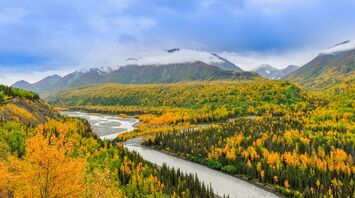The Positive Impact of Geotagging in Travel: How Location Sharing Can Benefit Communities and Conservation

In the age of social media, the practice of geotagging—sharing the exact location of a photo—has become both popular and controversial. While critics argue that it leads to overcrowding at natural landmarks and even harm to delicate ecosystems, others highlight the potential benefits geotagging can bring when used responsibly. From promoting lesser-known destinations to aiding conservation efforts, geotagging has the power to reshape how we travel and engage with the world.
Geotagging as a Tool for Promoting Responsible Tourism
One of the most significant advantages of geotagging is its ability to distribute tourism more evenly across regions. When travelers geotag their photos of lesser-known places, they can spark interest in destinations that may not be on the typical tourist radar. This can alleviate pressure on overcrowded spots, offering an alternative for travelers seeking unique experiences away from the mainstream.
By bringing attention to these under-visited locations, geotagging helps to spread tourism revenue to local economies that might not otherwise benefit from the industry. As people flock to new places, communities can leverage this influx of visitors by offering services such as guided tours, accommodations, and locally made products, which further supports economic growth.
Raising Awareness for Conservation Through Geotagging
Beyond tourism, geotagging can play a vital role in supporting environmental conservation. When travelers share photos of pristine locations or endangered species, they can help raise awareness about the importance of protecting these areas. By geotagging national parks or conservation sites, visitors may encourage others to visit responsibly, engage with local conservation efforts, and contribute financially through entrance fees or donations.
Additionally, environmental organizations can use data from geotagged posts to track visitor patterns and assess the impact of tourism on fragile ecosystems. This information helps conservationists make more informed decisions about how to manage protected areas and maintain a balance between preserving natural landscapes and allowing public access.
Geotagging and Cultural Preservation
Geotagging also offers opportunities for promoting cultural preservation. By highlighting cultural landmarks, traditional festivals, or historical sites, travelers can introduce these elements to a broader audience. When more people become aware of a community's cultural heritage, there’s a greater chance that these traditions will be respected and preserved for future generations.
Moreover, geotagging can stimulate interest in local customs and art forms that might otherwise be overlooked. For example, visitors who post about a remote village’s unique craftwork may attract other travelers interested in cultural exchanges, fostering appreciation for the community’s way of life and potentially supporting artisans by increasing demand for their handmade goods.
Addressing the Concerns of Over-Tourism
While geotagging has many benefits, it’s essential to address the concerns that arise when certain locations become overrun by tourists due to viral social media posts. Popular natural sites, such as waterfalls, beaches, or hiking trails, can be overwhelmed by the sheer volume of visitors, leading to environmental degradation, littering, and destruction of habitats.
To counteract this, many advocates are encouraging travelers to geotag responsibly. Instead of pinpointing the exact location of fragile ecosystems, some suggest tagging broader regions or using hashtags that raise awareness about conservation efforts. Platforms like Instagram have introduced features that allow users to tag general areas without disclosing precise locations, thus helping to protect sensitive environments from over-tourism.
Additionally, travel influencers and bloggers are increasingly promoting sustainable travel practices alongside their geotagged posts. By encouraging followers to respect wildlife, stay on marked trails, and avoid damaging natural features, these influencers play a critical role in educating their audiences on how to enjoy nature without causing harm.
Geotagging and Disaster Relief
In times of crisis, geotagging has proven to be a valuable tool for disaster relief and recovery efforts. When natural disasters strike—whether earthquakes, floods, or wildfires—geotagged images shared on social media can provide real-time data about the location and extent of damage. Emergency responders and relief organizations can use this information to allocate resources more effectively and coordinate rescue efforts.
Moreover, geotagged posts help spread awareness about the needs of affected communities. Social media campaigns often include links to donation pages, volunteer sign-ups, or fundraising events, allowing individuals around the world to contribute to recovery efforts. In this way, geotagging can mobilize a global response to crises, providing both immediate aid and long-term support for rebuilding.



















